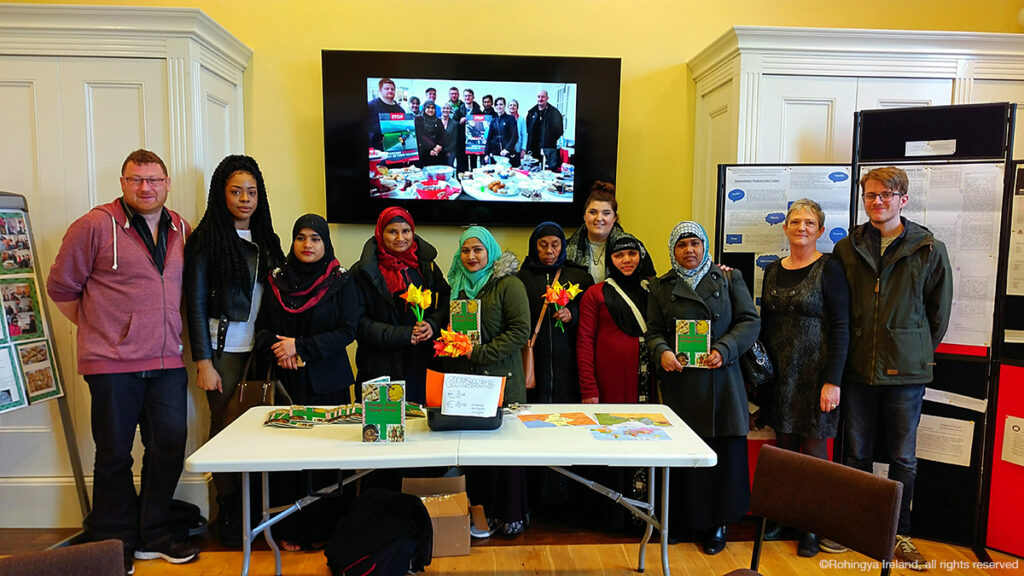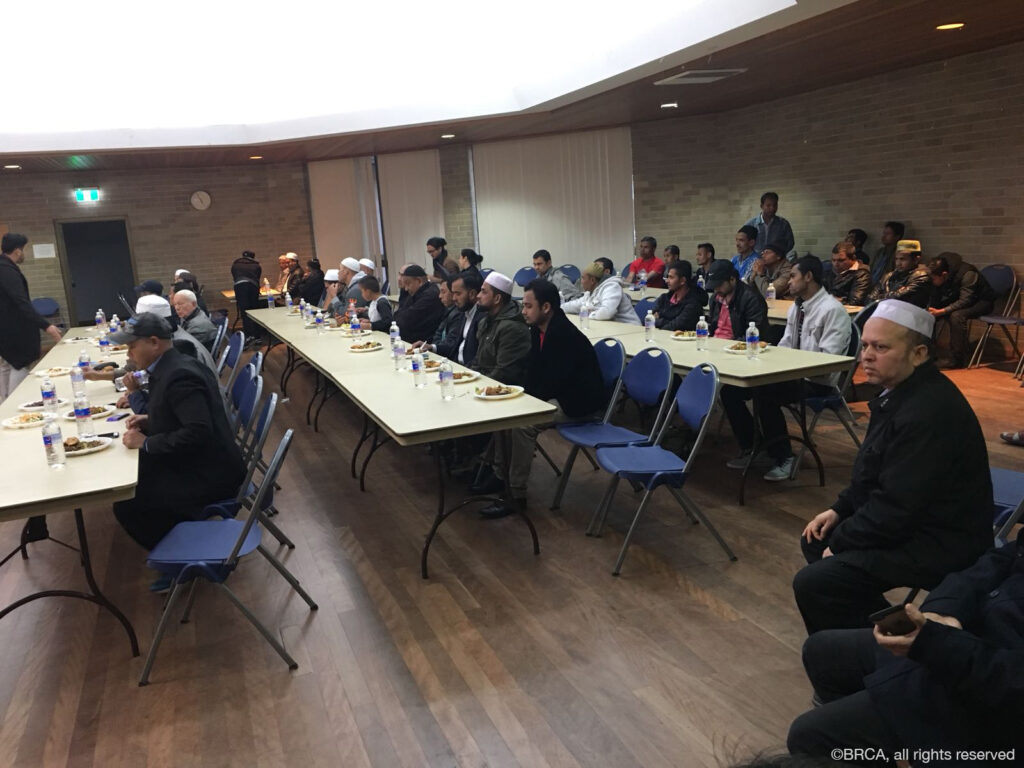Hello and welcome to MOAS…
Resettlement can be a daunting prospect. There’s the language, the culture, the customs, a different lifestyle. Will I be accepted, will we integrate? These are concerns facing refugees set to make their lives somewhere new. Resettlement is a key programme run by UNHCR and it involves identifying vulnerable refugees from a country they found asylum in, to another offering them a safer and more permanent future.
According to figures going back to 2003, UNHCR has resettled up to 207,000 Rohingya from the Bangladesh refugee camps, so far. Since the recent crisis, there have been calls to resettle even more. In this episode, we’re going to talk to people about what resettlement looks like, hearing from resettled Rohingya communities and those calling for more resettlement.
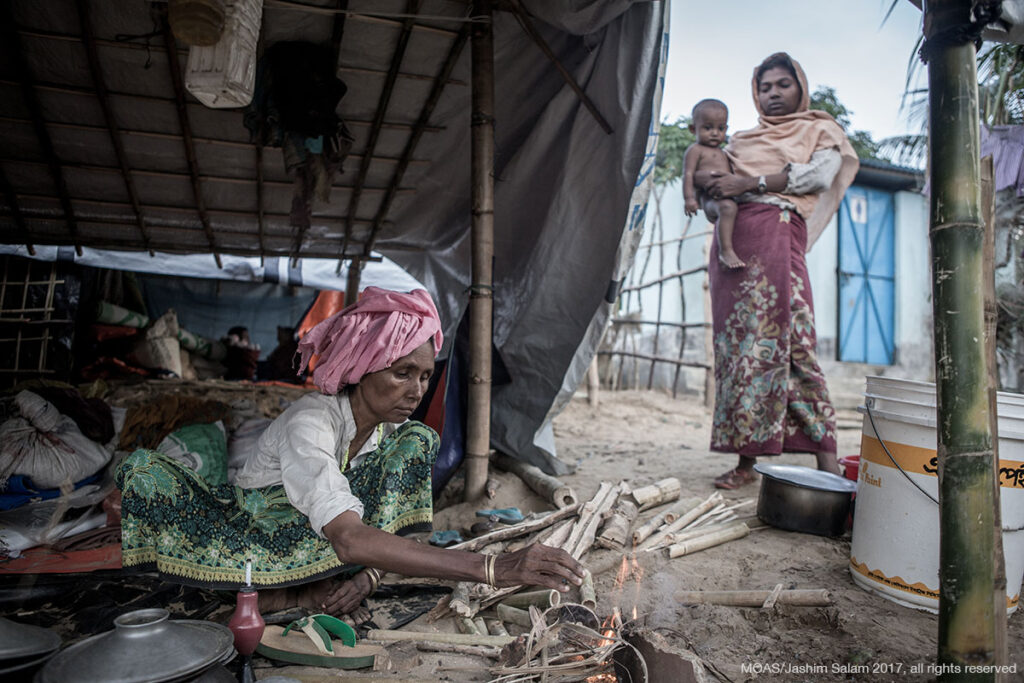
Rudy Ovcjak is the Director for the Office for Refugees of the Archdiocese of Toronto. ORAT is one of nearly 120 Private Sponsorship Agreement Holders (PSAH), a mix of private citizen, community and faith based organisations sponsoring refugee individuals and families through everything from seeking school places to finding accommodation.
Private sponsorship has been responsible for the resettlement of 200,000 of Canada’s half million resettled refugees over the last 4 decades. Ever since the Canadian Envoy to Myanmar; Bob Rae, published his findings on the Rohingya crisis, ORAT and others have been waiting for the government to make a move on further Rohingya resettlement to Canada.
‘Certainly in my experience directing this office, the work that our parishes do and other faith based organisations do is absolutely fantastic, and it has been proven statistically that we have much stronger integration outcomes than refugees that come under the government sponsored refugee programme. The key difference and let me first of all point the difference in integration outcomes. This is based on analysis of Syrian refugees that were brought into Canada which found that refugees brought in under the government sponsored programme.
Ninety percent of them went on to social assistance in year two. That means 10% were self-sufficient by the end of their sponsorship period, which is typically one year. The same measure for private sponsorship indicated that 55% of privately sponsored refugees were self-sufficient in year one. That’s a five-fold improvement over the same integration outcomes that the government has.
There are two principle reasons for this but I think the most significant reason for this difference in integration outcomes is that when a refugee arrives to Canada, with faith-based organisations, they are welcomed into a community.
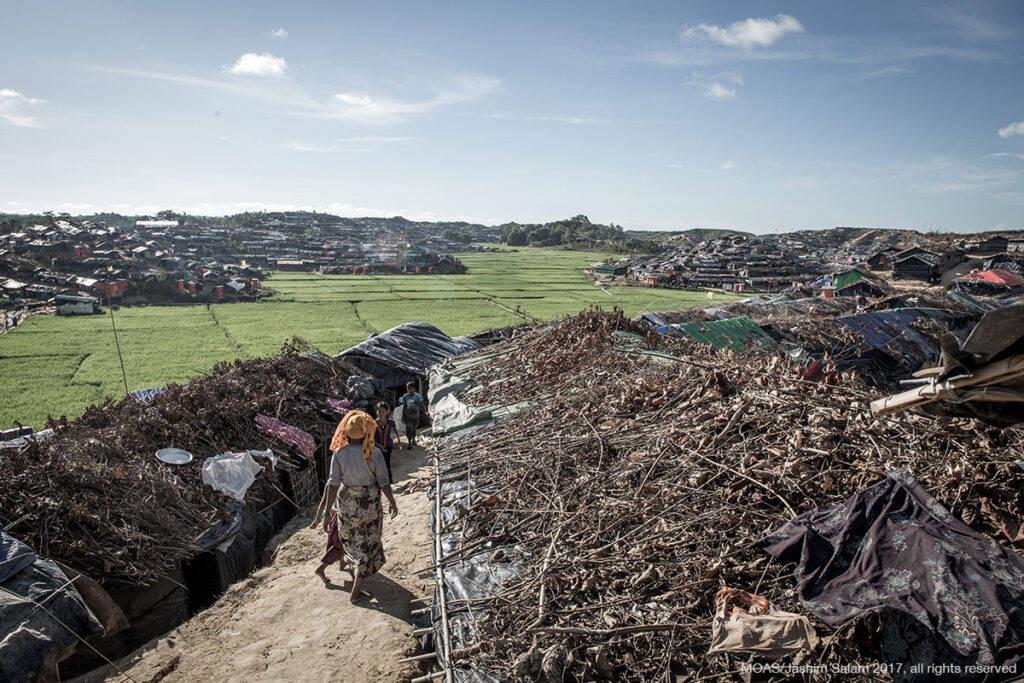
So we have when we’re working with our parishes, anywhere between 5 and 25 volunteers working with this newcomer family to integrate them into Canada, so they build their relationships, they orientate them to their new lives in Canada, they provide them with all sorts of assistances, they’re able to find accommodations, ensuring their access to all of the government programmes that they’re entitled to. They help register their kids in school.
It’s a beautiful, fantastic programme that faith organisations are able to bring to bear just because of the good will of regular parishioners that want to help address the plight of refugees, and I compare that against those that come under the government sponsored programme and here you have one government settlement agency worker, who has typically has in their portfolio anywhere between 15 and 25 families that their supporting at any given time.
So you can see the difference in support levels, why that would lead to stronger integration outcomes. Another difference that I think has been cited is that what has been reported is that government sponsored refugees typically are more vulnerable so they have lower education. But it would be interesting to find an apples to apples comparison and then compare the integration outcomes, but I think the principle driver is the number of people that are helping an individual newcomer, newcomer family orient them to a new life in Canada, in that’s the principle driver.’
What kinds of activities do resettled people go into once they reach Canada?
‘After they are greeted at the airport by their sponsoring family or sponsoring parish group, they are then settled in usually temporary accommodation for a period of one to two weeks and during that time, there is a whole series of activities that they undertake with their sponsor, with their parish group.
That includes accessing healthcare, looking for permanent accommodation, so the newcomer family is typically involved in that process of securing their more permanent accommodations. They are orientated to some of the cultural elements associated with Canadian life. During those first two weeks, it’s a lot about relationship building between that sponsoring group and that individual and newcomer family.
Now when there is a family linked case, this is a bit different that our parish linked cases, a family member living in Canada wants to sponsor their family from overseas and so they can do that from the office for refugees. So, in those cases, the relationships are already well established and so there is no relationship building.
But, for parish groups and community organisations who are the primary sponsor, there’s a lot of relationship building that needs to take place. Then one of the most important steps in their integration process is language. So there are settlement agencies that are government run organisations that will do a language assessment and help to register if required, into language training. So that’s one of the key tasks.
Also, as part of their integration, it’s important that they require employment counselling that they have access to that. When they are ready to, is to look for employment and usually our co-sponsors whether they be parishes or families of the newcomers, they have done a remarkable job in helping them access English language training and securing employment. Then it’s going about making a life in Canada and all that that entails.’
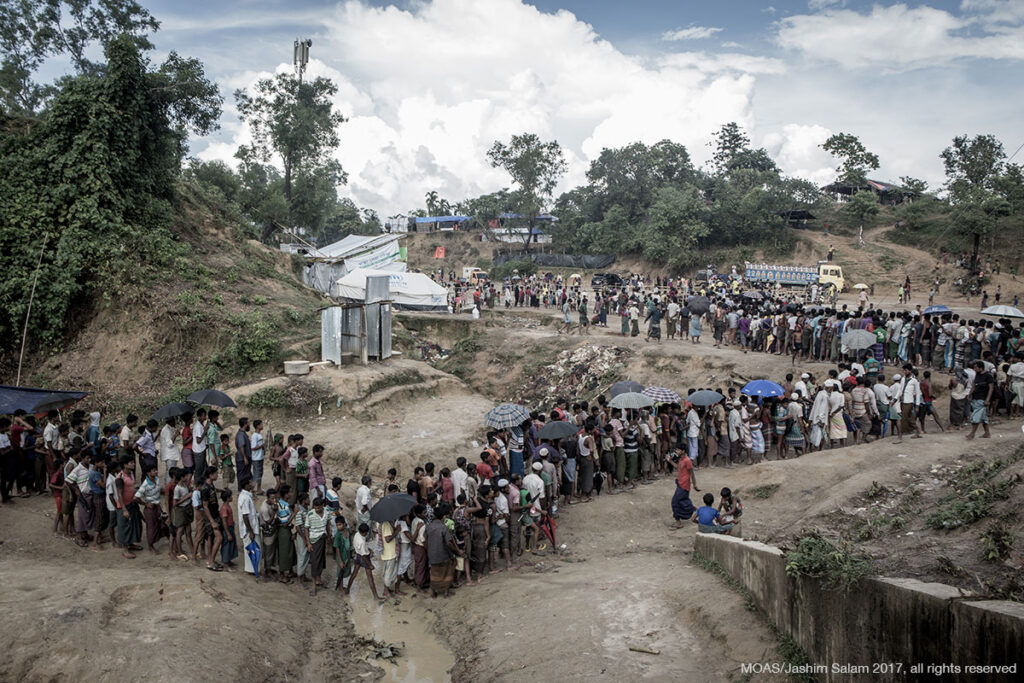
Canada has so far accepted 303 Rohingya refugees, resettled from Bangladesh. Given the Trudeau government established a target to resettle 25,000 Syrian refugees back in 2016, do you see more Rohingya coming given the circumstances?
‘I don’t know what is in the mind of government officials, whether that be our Prime Minister or the Minister for Immigration, so I can’t speak in terms of the plans and steps that they will take to address the Rohingya refugee crisis. I don’t know if there is going to be a special programme undertaken similar to that of the Syrian refugees.
My only concern if a new initiative like that were to be undertaken for the Rohingya is about the refugees that have been in the process, have been waiting to be received by Canada, the impact that that will have on them and who have been suffering equally. This is difficult for the Rohingya but equally difficult for the many refugees who are suffering throughout the world, so I think it’s difficult to prioritize one group over another.
That being said, Canada has shown a tremendous willingness to address the plight of refugees whether they are Rohingya, or Syrian or Iraqi or Pakistani Christians that have fled to Thailand. I think at this point, there are 25 million refugees throughout the world so the tremendous need to address the plight of refugees is so great that we can only do what we can in addressing the plight of refugees. We can’t certainly assist all 25 million.
Canada cannot do that on its own but we can play and we have demonstrated that we can play a very significant role.’
For more on how UNHCR’s refugee resettlement process works, click here.
Despite the millions seeking resettlement through UNHCR, only a lucky few succeed.
This year so far, UNHCR has filed humanitarian visa applications for nearly 33,000 potential candidates among 46 participating countries. Those Rohingya who managed to be resettled under UNHCR, find themselves in communities ranging from less than a hundred up to a few thousand.
Haikal Mansor is Rohingya but he wasn’t resettled. Instead he came to Ireland to pursue his studies in medicine. He forms part of the small community of 78 Rohingya living in Carlow and Dublin in the Republic of Ireland, many of whom were resettled there in 2009. It’s a mostly young community, one well known for its cricket.
‘The majority of them, almost the entirety of the Rohingya community have lived in the refugee camps for 17 years before being resettled in Ireland. These are the Rohingya people who were forced to flee Burma in 1991-92 during so-called Operation Clean and Beautiful Nation, which was conducted by the former military junta. This forced over 250,000 Rohingya to become homeless and become refugees in Bangladesh.
The Rohingya community in Ireland is a very small community and it is made up almost entirely of youth. I would say about 80% of the community is youth. We also have a lot of widows whose husbands were either killed during Operation Clean Nation during 1991, and also whose husbands were detained in Bangladesh during the repatriation process in 1993. Around 10% of the community are elderly, the majority of which are women.’
What kinds of challenges or difficulties did this community face coming to Ireland?
‘It is not easy for any community or any individual to come to a place which is entirely new, a new world for the community, because they have spent literally an entire life, 17 years in a refugee camp.
The youngsters, the majority of them were born in the refugee camps. They are in an open prison although it is outside Burma, inside Bangladesh. They have literally not had freedom of movement beyond the camp. They have also not seen the delivery of good healthcare beyond the basics. This community has not seen an education beyond class five. Anyone who completed class five until 2001 had no right to go to high school or university education.
These people have also been isolated for so many years. Coming to Ireland is a huge challenge not only because it’s over 9000 kilometres from home, but also because the language is completely different, the weather is completely different, the culture is completely different, everything is completely different. The community has faced several challenges especially in the language barrier, coping with the weather and also the different community and society here.
The community is extremely lucky to have so many wonderful people in Ireland, volunteers, students, teachers, colleges, schools and even law enforcement agencies, who have all contributed collectively to make this community feel at home as well as to cope with their new home as soon as possible. This community has been implanted with the hope and they were very much aware of that hope and bringing that hope to fulfil the goals they have in life, for example educating the youngsters, their kids and also standing up for their community who have been left behind in the refugee camps in Burma.
So now we are very fortunate where a lot of people are coping and calling this country, Ireland, a home.’
Can you tell me how the younger generation is coping with their lives in Ireland, compared with the older ones?
‘The younger generations are very enthusiastic and eager to learn than the older generation of Rohingya in Ireland. When they were first resettled they had had nothing in the refugee camps, they were given opportunities in education, housing and freedom of movement and a healthy environment in Ireland. They also saw the other kids from the different communities in Ireland and they became interested in becoming part of that society.
They were also admitted into different schools and started learning different things as well as the many teachers who gave them lessons in their new language. We are so proud of them.
Now we have a Rohingya refugee youth that was only 12 years old when he was resettled in Ireland. Now he is a professionally trained pilot in Dublin. We also have another Rohingya youth who is now studying at the most prestigious university in Ireland Trinity college, he is studying healthcare.
We have a lot of youngsters who are pursuing their goals and their dreams to become whatever they want. This would not be possible if 10 years ago, they were still in refugee camps. So, this is the positivity of resettling Rohingya refugees any refugees from any part of the world.’
What is the importance of cricket to your community and how it has helped connect you better with the Carlow community?
‘The Rohingya community in Ireland is particularly well known in Ireland for the Carlow Cricket Club. Carlow Cricket Club was one of the oldest cricket clubs in Ireland and it was completely defunct, it closed down in the 1980s.
When the Rohingya were being resettled in Carlow, the youngsters especially, who had grown up in Bangladesh, cricket is their main sport and cricket is rarely played in Burma. This generation had grown up in the refugee camps where they played cricket. So, they wanted to play cricket in Carlow and with the help of so many people they started playing on open ground.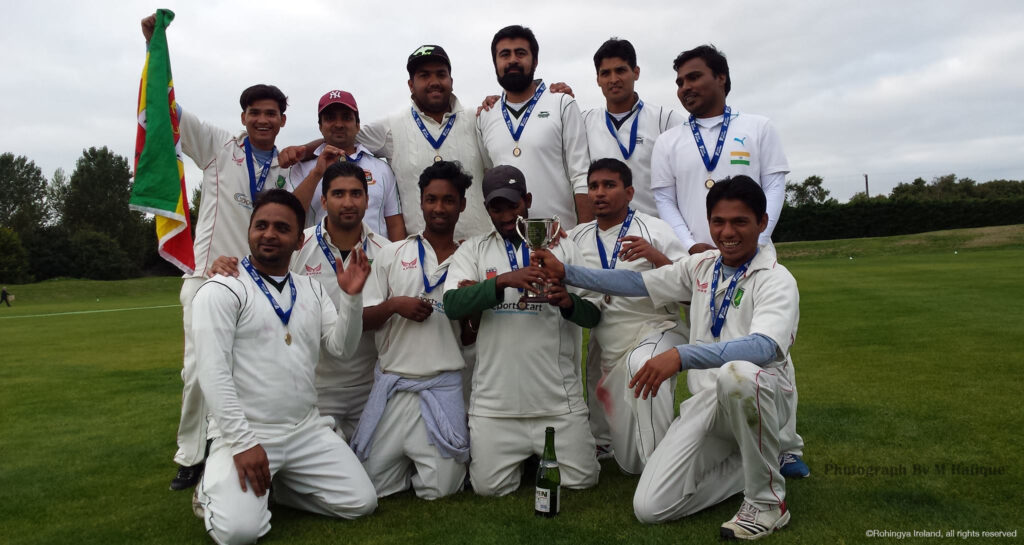
Then, slowly and gradually the community realized that there was once a cricket club in Carlow and they started re-opening the cricket club in 2011-12. In its first year, the Carlow Cricket Club brought home two major championship trophies for the first time in the 40 years of the club’s history.
We are so proud of the club and the community and the many other people who contributed. Now Carlow’s Cricket Club has not just Rohingya but also various nationalities; Irish community, Rohingya community, Pakistan community, Indian community, Bangladesh community and various other communities.
Carlow became a symbol for the Rohingya community in Ireland for the successful integration into society.’
Australia maintains a firm stand on refugee and humanitarian visa numbers despite calls from Australian and Rohingya voices alike, to increase resettlement quotas. One of those voices is the Burmese Rohingya Community Association in Sydney.
Formed in 1999, it provides a range of services to new arrivals, supporting a community of almost 7,000 and advocating for more resettlement. Acting president Ahsan Ul Haque was in Canberra last month campaigning for more Rohingya places.
‘For a very long time and even today for that matter, we’ve been pushing for the resettlement to restart, especially since it ceased in Bangladesh, that would be around 2010. Initially 300 families resettled in Brisbane. That came from a push by BRCA itself. We kept advocating. There is also something called a community proposal pilot, called a CSP. It’s a piece of legislation where the community members can actually push for a quota for their migrant demographic to be resettled in Australia, done through UNHCR.
We were doing this until 2010 when the resettlement was ceased, mostly because of the Bangladeshi government. For what I’ve heard they’ve stopped it for some reason and there’s a lot of technical issues with UNHCR as well. Having said that, since 2012 the massacre happened and also recently 2017, we’ve been pushing really hard on UNHCR. Even though it’s not on paper or official, UNHCR has assured us that they’ve been pushing for Rohingya refugees from all around the world and especially from the UNHCR camps to be resettled in Australia and other countries like they did with the Syrian refugees in Australia about two years ago. That was when they resettled around 12,000 refugees given the crisis.
Something similar is in the offing to happen for Rohingya as well but we haven’t really heard anything so we’re still waiting and we continue pushing. Even last month when I went to Canberra, there was an UNHCR NGO consultation and I brought it up there as well and I’ve had a similar positive response where they said they’re pushing for it but nothing official has happened yet.’
For the time being, resettlement of Rohingya from the Bangladesh camps has come second to returning them home. Eyes and agendas are squarely focused on the repatriation of the newest arrivals with many wanting to go back. But, with widespread criticism of the opaque return plans and Myanmar’s lukewarm responses to welcoming them back, could resettling more Rohingya be the answer? 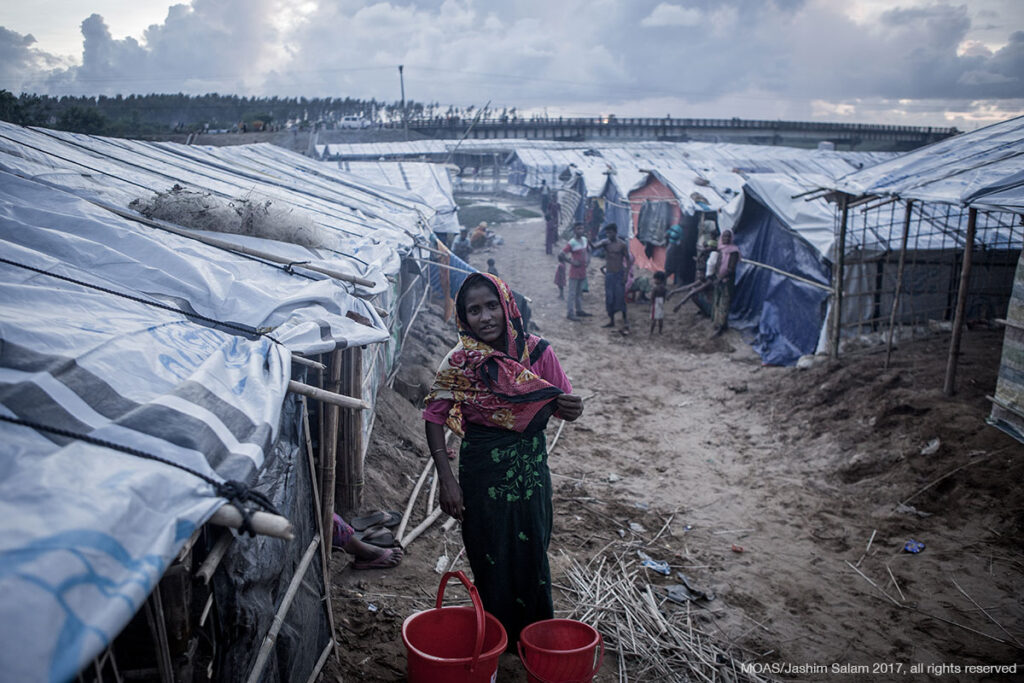
If you liked this Podcast don’t forget to hit like, comment and subscribe for more Podcasts from us. You can also follow us on our social media. Check out our latest updates on Facebook, Twitter, Instagram, Youtube and AudioBoom… or you can donate to help us help Rohingya refugees .
From all of us here at MOAS: goodbye.


